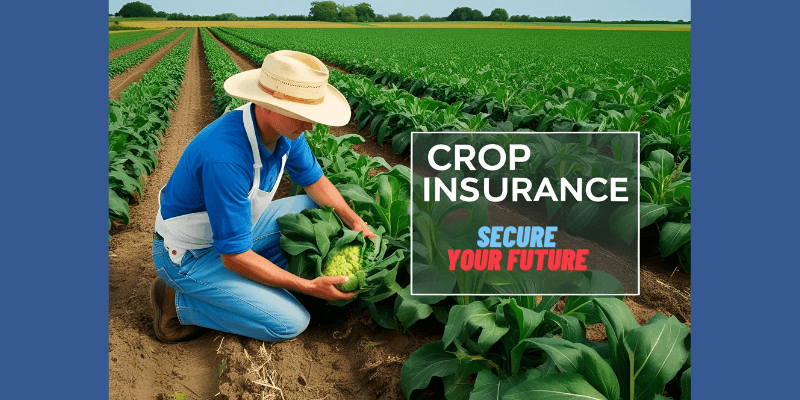General Discussion About Crop Insurance: Protecting Farmers and Agriculture

Crop insurance is a vital financial tool designed to protect farmers against losses caused by natural disasters, pests, and market fluctuations. In this article, we’ll explore the importance of crop insurance, its benefits, types, and how it supports agricultural sustainability. Whether you’re a farmer, policymaker, or simply interested in agriculture, understanding crop insurance can help secure the future of farming.
Table of Contents
What is Crop Insurance?
Crop insurance is a risk management tool that compensates farmers for losses due to unforeseen events such as droughts, floods, hailstorms, or pest infestations. It helps stabilize farm income, ensuring that farmers can recover and continue operations even after significant losses.
Why is Crop Insurance Important?
Agriculture is highly vulnerable to weather and market risks. Without proper safeguards, farmers face financial ruin, leading to food shortages and economic instability. Crop insurance provides:
- Financial Security: Protects farmers from catastrophic losses.
- Encourages Investment: Farmers can invest in better seeds and technology.
- Food Security: Ensures stable food production.
- Economic Stability: Supports rural economies.
Types of Crop Insurance
Different crop insurance policies cater to varying needs:
- Yield-Based Insurance: Covers losses in crop yield.
- Revenue-Based Insurance: Protects against price fluctuations.
- Weather-Indexed Insurance: Uses weather data to trigger payouts.
- Area-Based Insurance: Covers losses in a specific region.
Key Benefits of Crop Insurance
The crop insurance benefits extend beyond individual farmers:
- Risk Mitigation: Reduces uncertainty in farming.
- Access to Credit: Banks are more willing to lend to insured farmers.
- Sustainable Farming: Encourages long-term agricultural practices.
- Government Support: Many countries subsidize premiums.
How Does Crop Insurance Work?
Farmers pay a premium, and in case of a covered loss, they receive compensation based on pre-agreed terms. The process involves:
- Policy Selection: Choosing the right coverage.
- Premium Payment: Often subsidized by governments.
- Loss Assessment: Adjusters evaluate damage.
- Claim Payout: Compensation is provided.
Challenges in Crop Insurance
Despite its advantages, crop insurance faces hurdles:
- High Premiums: Some farmers can’t afford coverage.
- Fraud Risks: False claims can destabilize the system.
- Limited Awareness: Many farmers lack knowledge about policies.
- Climate Change: Increasing unpredictability of weather.
The Future of Crop Insurance
Advancements in technology, such as satellite imaging and AI, are improving crop insurance accuracy. Governments and insurers are also exploring:
- Parametric Insurance: Faster payouts using data triggers.
- Blockchain: Transparent claim processing.
- Climate-Smart Policies: Adapting to environmental changes.
Conclusion
Crop insurance is a cornerstone of modern agriculture, offering financial protection and promoting sustainability. By understanding crop insurance benefits, farmers and policymakers can make informed decisions to safeguard food security and rural livelihoods.
Frequently Asked Questions (FAQs)
Q: Who provides crop insurance?
A: Governments, private insurers, and public-private partnerships offer crop insurance.
Q: Is crop insurance mandatory?
A: It depends on the country; some governments make it compulsory for loan eligibility.
Q: How are premiums calculated?
A: Premiums depend on crop type, location, historical risks, and coverage level.